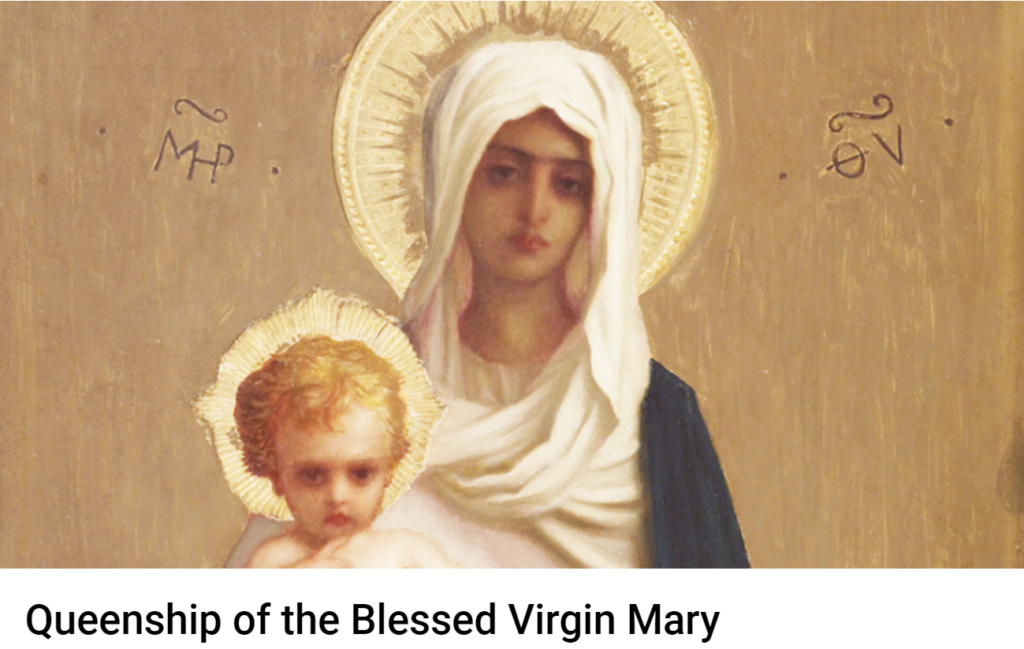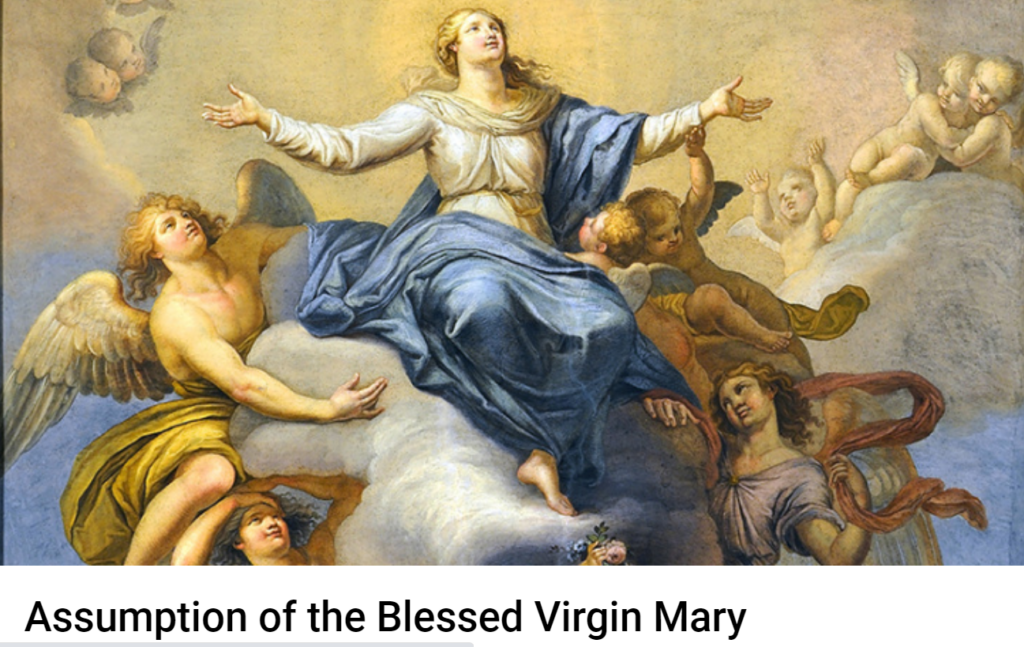Saint of the Day – December 13 – Saint Lucy, Virgin & Martyr
Saint of the Day – December 10th -Saint Eulalia, Virgin and Martyr
Saint of the Day – December 9th -Saint Leocadia, Virgin and Martyr
Saint of the Day – December 11 – Saint Damasus

Saint Damasus’ Story (304 – DECEMBER 11, 384)
To his secretary Saint Jerome, Damasus was “an incomparable person, learned in the Scriptures, a virgin doctor of the virgin Church, who loved chastity and heard its praises with pleasure.” Damasus seldom heard such unrestrained praise. Internal political struggles, doctrinal heresies, uneasy relations with his fellow bishops and those of the Eastern Church marred the peace of his pontificate.
The son of a Roman priest, possibly of Spanish extraction, Damasus started as a deacon in his father’s church, and served as a priest in what later became the basilica of San Lorenzo in Rome. He served Pope Liberius (352-366) and followed him into exile.
When Liberius died, Damasus was elected bishop of Rome; but a minority elected and consecrated another deacon, Ursinus, as pope. The controversy between Damasus and the antipope resulted in violent battles in two basilicas, scandalizing the bishops of Italy. At the synod that Damasus called on the occasion of his birthday, he asked them to approve his actions. The bishops’ reply was curt: “We assembled for a birthday, not to condemn a man unheard.” Supporters of the antipope even managed to get Damasus accused of a grave crime—probably sexual—as late as A.D. 378. He had to clear himself before both a civil court and a Church synod.
As pope, his lifestyle was simple in contrast to other ecclesiastics of Rome, and he was fierce in his denunciation of Arianism and other heresies. A misunderstanding of the Trinitarian terminology used by Rome threatened amicable relations with the Eastern Church, and Damasus was only moderately successful in dealing with that challenge.
During his pontificate, Christianity was declared the official religion of the Roman state, and Latin became the principal liturgical language as part of the pope’s reforms. His encouragement of Saint Jerome’s biblical studies led to the Vulgate, the Latin translation of Scripture which 12 centuries later the Council of Trent declared to be “authentic in public readings, disputations, preaching.”
Reflection
The history of the papacy and the Church is inextricably mixed with the personal biography of Damasus. In a troubled and pivotal period of Church history, he stands forth as a zealous defender of the faith who knew when to be progressive and when to entrench.
Damasus makes us aware of two qualities of good leadership: alertness to the promptings of the Spirit, and service. His struggles are a reminder that Jesus never promised his Rock protection from hurricane winds nor his followers immunity from difficulties. His only guarantee is final victory.
//Franciscan Media//
Feast Day – September 8 – Nativity of the Blessed Virgin Mary

The Story of the Nativity of the Blessed Virgin Mary
The Church has celebrated Mary’s birth since at least the sixth century. A September birth was chosen because the Eastern Church begins its Church year with September. The September 8 date helped determine the date for the feast of the Immaculate Conception on December 8.
Scripture does not give an account of Mary’s birth. However, the apocryphal Protoevangelium of James fills in the gap. This work has no historical value, but it does reflect the development of Christian piety. According to this account, Anna and Joachim are infertile but pray for a child. They receive the promise of a child who will advance God’s plan of salvation for the world. Such a story, like many biblical counterparts, stresses the special presence of God in Mary’s life from the beginning.
Saint Augustine connects Mary’s birth with Jesus’ saving work. He tells the earth to rejoice and shine forth in the light of her birth. “She is the flower of the field from whom bloomed the precious lily of the valley. Through her birth the nature inherited from our first parents is changed.” The opening prayer at Mass speaks of the birth of Mary’s Son as the dawn of our salvation, and asks for an increase of peace.
Reflection
We can see every human birth as a call for new hope in the world. The love of two human beings has joined with God in his creative work. The loving parents have shown hope in a world filled with travail. The new child has the potential to be a channel of God’s love and peace to the world.
This is all true in a magnificent way in Mary. If Jesus is the perfect expression of God’s love, Mary is the foreshadowing of that love. If Jesus has brought the fullness of salvation, Mary is its dawning.
Birthday celebrations bring happiness to the celebrant as well as to family and friends. Next to the birth of Jesus, Mary’s birth offers the greatest possible happiness to the world. Each time we celebrate her birth, we can confidently hope for an increase of peace in our hearts and in the world at large.
//Franciscan Media//
Feast Day – August 22 – Queenship of the Blessed Virgin Mary


The Story of the Queenship of Mary
Pope Pius XII established this feast in 1954. But Mary’s queenship has roots in Scripture. At the Annunciation, Gabriel announced that Mary’s Son would receive the throne of David and rule forever. At the Visitation, Elizabeth calls Mary “mother of my Lord.” As in all the mysteries of Mary’s life, she is closely associated with Jesus: Her queenship is a share in Jesus’ kingship. We can also recall that in the Old Testament the mother of the king has great influence in court.
In the fourth century Saint Ephrem called Mary “Lady” and “Queen.” Later Church fathers and doctors continued to use the title. Hymns of the 11th to 13th centuries address Mary as queen: “Hail, Holy Queen,” “Hail, Queen of Heaven,” “Queen of Heaven.” The Dominican rosary and the Franciscan crown as well as numerous invocations in Mary’s litany celebrate her queenship.
The feast is a logical follow-up to the Assumption, and is now celebrated on the octave day of that feast. In his 1954 encyclical To the Queen of Heaven, Pius XII points out that Mary deserves the title because she is Mother of God, because she is closely associated as the New Eve with Jesus’ redemptive work, because of her preeminent perfection, and because of her intercessory power.
Reflection
As Saint Paul suggests in Romans 8:28–30, God has predestined human beings from all eternity to share the image of his Son. All the more was Mary predestined to be the mother of Jesus. As Jesus was to be king of all creation, Mary, in dependence on Jesus, was to be queen. All other titles to queenship derive from this eternal intention of God. As Jesus exercised his kingship on earth by serving his Father and his fellow human beings, so did Mary exercise her queenship. As the glorified Jesus remains with us as our king till the end of time (Matthew 28:20), so does Mary, who was assumed into heaven and crowned queen of heaven and earth.
//Franciscan Media//
Feast Day – August 15 – Solemnity of the Assumption of the Blessed Virgin Mary

The Story of the Assumption of the Blessed Virgin Mary
On November 1, 1950, Pope Pius XII defined the Assumption of Mary to be a dogma of faith: “We pronounce, declare and define it to be a divinely revealed dogma that the immaculate Mother of God, the ever Virgin Mary, having completed the course of her earthly life, was assumed body and soul to heavenly glory.” The pope proclaimed this dogma only after a broad consultation of bishops, theologians and laity. There were few dissenting voices. What the pope solemnly declared was already a common belief in the Catholic Church.
We find homilies on the Assumption going back to the sixth century. In following centuries, the Eastern Churches held steadily to the doctrine, but some authors in the West were hesitant. However by the 13th century there was universal agreement. The feast was celebrated under various names—Commemoration, Dormition, Passing, Assumption—from at least the fifth or sixth century. Today it is celebrated as a solemnity.
Scripture does not give an account of Mary’s assumption into heaven. Nevertheless, Revelation 12 speaks of a woman who is caught up in the battle between good and evil. Many see this woman as God’s people. Since Mary best embodies the people of both Old and New Testaments, her assumption can be seen as an exemplification of the woman’s victory.
Furthermore, in 1 Corinthians 15:20, Paul speaks of Christ’s resurrection as the first fruits of those who have fallen asleep.
Since Mary is closely associated with all the mysteries of Jesus’ life, it is not surprising that the Holy Spirit has led the Church to believe in Mary’s share in his glorification. So close was she to Jesus on earth, she must be with him body and soul in heaven.
Reflection
In the light of the Assumption of Mary, it is easy to pray her Magnificat (Luke 1:46–55) with new meaning. In her glory she proclaims the greatness of the Lord and finds joy in God her savior. God has done marvels to her and she leads others to recognize God’s holiness. She is the lowly handmaid who deeply reverenced her God and has been raised to the heights. From her position of strength she will help the lowly and the poor find justice on earth, and she will challenge the rich and powerful to distrust wealth and power as a source of happiness.
//Franciscan Media//
Meditation of the Day – Give Heed to the Word of God

“Always give good heed to the Word of God, whether you hear or read it in private, or hearken to it when publicly preached: listen with attention and reverence; seek to profit by it, and do not let the precious words fall unheeded; receive them into your heart as a costly balsam; imitate the Blessed Virgin who ‘kept all the sayings’ concerning her Son, ‘in her heart.’ And remember that according as we hearken to and receive God’s words, so will He hearken and receive our supplications.”— St. Francis de Sales
//The Catholic Company//


